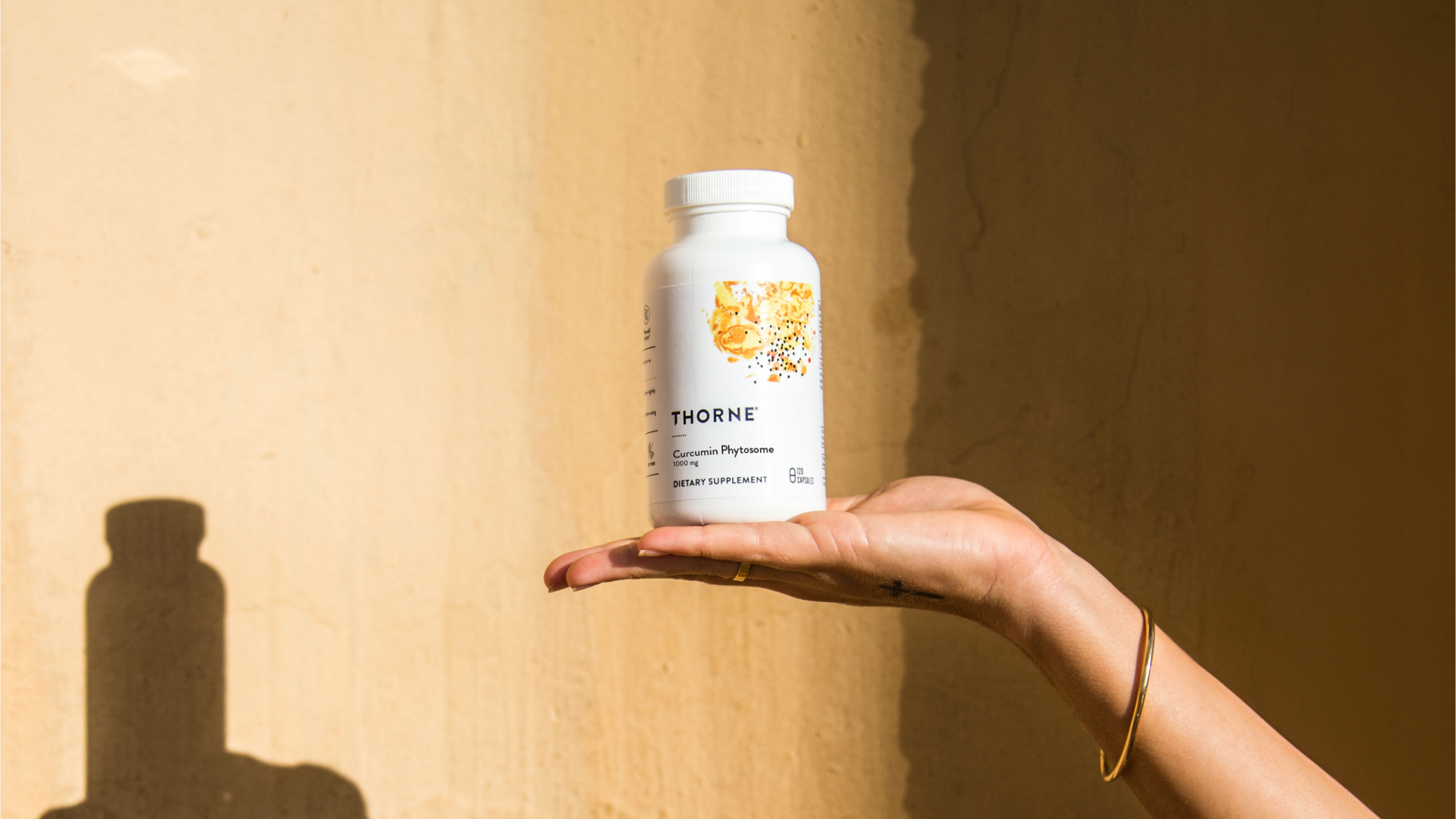How do you know if oxalates are the reason behind your joint pain?
In this article, we are sharing everything you need to know about oxalates, including which foods contain them, how they can impact well-being, and what to do if you suspect oxalates are a problem for you.
Joint pain is a common complaint. It is typically caused by inflammation in the joints, which can be painful, alter your body’s normal range of movement, and disrupt day-to-day activities due to discomfort.
Achy knees, sore shoulders and stiff fingers aren’t just symptoms of age, arthritis, injury or overuse. In fact, the cause of joint pain may not always be obvious. If you are experiencing seemingly mysterious joint pain, your diet may be to blame.
Some people are sensitive to certain naturally occurring compounds in foods. One such compound is oxalate, which is found in nutritious foods like berries and leafy greens. That means even nutritious diets full of colourful plant foods could have the opposite of the intended effect and be contributing to health concerns, like cranky joints.

What are oxalates?
Oxalates are compounds made of carbon and oxygen molecules. They are naturally found in plants, including some popular fruits and vegetables.
Oxalates, along with other compounds, are part of a plant’s natural defence system. Their primary function is to protect plants from infectious diseases and being eaten by animals and insects in the wild.
What foods contain oxalates?
Oxalates can be found in certain fruit, vegetables, grains, legumes, nuts and seeds. Not all plant foods are high in oxalates.
The specific oxalate content in a given amount of food can vary depending on growing conditions and other variables. However, foods that tend to contain the highest levels of oxalates include:
- Leafy green vegetables, including spinach, kale and Swiss chard
- Almonds
- Berries
- Beets
- Black tea
- Carrots
- Celery
- Chocolate/cocoa powder
- Coffee
- Kiwi fruit
- Peanuts
- Rhubarb
- Star fruit
- Soy products, such as soya milk and tofu
Many people turn to green smoothies to improve their health. A single smoothie can contain multiple high-oxalate ingredients, such as soya milk, leafy greens, berries and nut butter. Berries are also a popular fruit for those following low-carb diets since they are lower in sugar than other fruits.
While these foods are good sources of beneficial nutrients, like fibre, antioxidants, vitamins and minerals, eating multiple servings of oxalate-containing foods daily can contribute to joint pain and other problems.
How Oxalates Can Impact Health
You may have high levels of oxalates if you eat many high-oxalate foods, have an altered gut microbiome, or have a genetic condition that alters how your body metabolizes oxalates.
Oxalates serve as food to some species of bacteria naturally found in the intestines. However, everyone’s gut microbiome differs depending on diet, lifestyle habits, genetics and state of health. Individuals who don’t have as many oxalate-eating bacteria or a high amount of yeast (Candida) in their gut may be more at risk for higher levels of oxalates in the body.
Let’s take a look at some of the problems high levels of oxalates can cause.
- Leaky gut syndrome: where the lining of the small intestine is impaired, it is also believed to increase oxalate absorption.
- Interferes with mineral absorption: when you consume a high amount of oxalates or they’re not getting broken down in the intestines, they can get absorbed into the bloodstream and bind to minerals, forming small crystal-like structures. Oxalates are an example of an antinutrient, which blocks the absorption of beneficial nutrients. Because oxalates bind to minerals, high levels may interfere with the normal absorption of essential minerals, like calcium and magnesium. Calcium is essential for strong bones and teeth and healthy muscle function. If calcium absorption is disrupted long-term, it can increase your risk for weak and brittle bones.
- Joint pain: the crystal structures that oxalates form are linked to inflammation and oxidative stress. Although microscopic, the crystals can collect in soft tissues and their sharp edges can create pain in connective tissue and joints. If you already have arthritis or old joint injuries, you can imagine how a high oxalate diet may worsen symptoms.
- Kidney stones: excess oxalates are typically broken down in the intestines and then excreted in the stool. Absorbed oxalates can also be excreted in urine via the kidneys. However, absorbed oxalates tend to bind to calcium and can increase the risk of kidney stones in some people.
How To Reduce Harmful Effects of Oxalates
If you eat several servings of high-oxalate foods on a daily basis and are experiencing unexplained joint pain, there are steps you can take to determine if you’re sensitive to oxalates and find relief.
- Check your oxalate levels: Mosaic Diagnostics offer a urine test that measures the number of oxalates and other compounds in your urine. To learn more about this, download our Functional Testing Catalogue from the Resources hub section of our Practitioner Hub or contact support@fxmed.co.nz.
- Diversify your diet: practice moderation with high oxalate foods. Instead of reaching for the same green smoothie or yogurt with berries every day, switch up your meal plan. Including more fruit and vegetable variety can help reduce your intake of oxalates and increase vitamin, mineral and antioxidant intake.
- You may want to consider a food sensitivity test: this can help pinpoint which foods to eat and which to limit. Food sensitivities are different from food allergies, but eating foods you’re sensitive to can trigger an inflammatory response that can exacerbate joint pain and other health concerns.
- Drink plenty of water: staying on top of your hydration helps flush excess oxalates from your body. Most adults need at least eight 250ml cups of water per day, but your needs may be higher during warm weather or if you’re very active.
- Replace green smoothies with cooked greens: cooking lowers the oxalate content in many foods. Greens are absolutely a nutritious food, but swapping raw greens in smoothies for boiled or steamed greens with lunch or dinner can help lower your oxalate levels.
- Pair oxalate foods with calcium-rich foods: when calcium is present with oxalates in the intestines, they bind together and are excreted through stool. Eating more calcium-rich foods, such as plain milk and yogurt, can help your body rid itself of excess oxalates.
The Bottom Line
Green smoothies, spinach salads and berries are popular choices when people want to improve their diets. Although leafy greens and berries contain beneficial nutrients, they’re also some of the most concentrated sources of dietary oxalates, which can throw a big spanner in the works for your attempts at healthy eating.
Although the body is capable of breaking down and excreting oxalates, not everyone can handle high intakes of oxalate-rich foods. Genetic predispositions, imbalances in the gut microbiome, leaky gut syndrome and eating too many high-oxalate foods daily can increase oxalates in the bloodstream, resulting in joint pain, kidney stones and changes in mineral status.
Practicing moderation with high oxalate foods and staying well-hydrated can help lower levels of oxalates. Functional Testing to measure your oxalate levels can help you understand how your diet and genetics impact them.

About the Author
Sharon Lehman, RD
Sharon Lehman, RD is an Integrative Nutrition Health Coach and a health writer. She specializes in intuitive eating, recipe development, food photography, and hormone health. She shares healthy living tips and recipes on her blog www.heartandstove.com.
- Mitchell T, Kumar P, Reddy T, et al. Dietary oxalate and kidney stone formation. Am J Physiol Renal Physiol. 2019;316(3):F409-F413. doi:10.1152/ajprenal.00373.2018
- Low Oxalate Diet. University of Pittsburgh Medical Center. Available from: https://www.upmc.com/-/media/upmc/patients-visitors/education/unique-pdfs/low-oxalate-diet.pdf
- Crivelli JJ, Mitchell T, Knight J, et al. Contribution of Dietary Oxalate and Oxalate Precursors to Urinary Oxalate Excretion. Nutrients. 2020;13(1):62. Published 2020 Dec 28. doi:10.3390/nu13010062
- Kumar P, Patel M, Oster RA, et al. Dietary Oxalate Loading Impacts Monocyte Metabolism and Inflammatory Signaling in Humans. Front Immunol. 2021;12:617508. Published 2021 Feb 25. doi:10.3389/fimmu.2021.617508
- Petroski W, Minich DM. Is There Such a Thing as “Anti-Nutrients”? A Narrative Review of Perceived Problematic Plant Compounds. Nutrients. 2020;12(10):2929. Published 2020 Sep 24. doi:10.3390/nu12102929
- Lorenz EC, Michet CJ, Milliner DS, Lieske JC. Update on oxalate crystal disease. Curr Rheumatol Rep. 2013;15(7):340. doi:10.1007/s11926-013-0340-4
- Chai W, Liebman M. Effect of different cooking methods on vegetable oxalate content. J Agric Food Chem. 2005;53(8):3027-3030. doi:10.1021/jf048128d
Share:
Related Posts

Thorne Celebrates 40 Years of Good Health
Maggie Chandler April 12, 2024 As it’s often said at Thorne, healthy ageing is a gift. It’s about embracing the way you feel, your experiences,

Healthy Coffee Alternatives: When to Quit Coffee & What to Drink Instead
Dr Thomas Wnorowski February 16, 2024 Key Points: Does the idea of quitting coffee make you feel all sorts of (terrible) things? It’s common. But

How Your Social Network Impacts Your Mental Health
Austin Ruff April 17, 2024 Humans are inherently social creatures. It’s in our nature to connect and want to be connected to the people around

Microbiota-Gut-Brain Axis: Behaviour and Dementia Implications
People take supplements to improve or optimize their health. So what happens when you look at the label, and the ingredient list is filled with

Gut Bacteria and GABA
People take supplements to improve or optimize their health. So what happens when you look at the label, and the ingredient list is filled with


